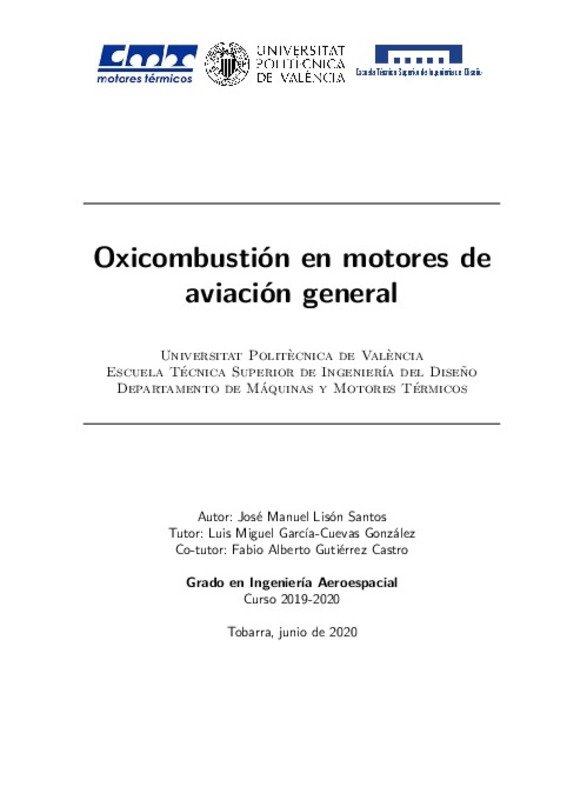JavaScript is disabled for your browser. Some features of this site may not work without it.
Buscar en RiuNet
Listar
Mi cuenta
Estadísticas
Ayuda RiuNet
Admin. UPV
Oxicombustión en motores de aviación general
Mostrar el registro completo del ítem
Lisón Santos, JM. (2020). Oxicombustión en motores de aviación general. Universitat Politècnica de València. http://hdl.handle.net/10251/147950
Por favor, use este identificador para citar o enlazar este ítem: http://hdl.handle.net/10251/147950
Ficheros en el ítem
Metadatos del ítem
| Título: | Oxicombustión en motores de aviación general | |||
| Autor: | Lisón Santos, José Manuel | |||
| Director(es): | Gutierrez Castro, Fabio Alberto | |||
| Entidad UPV: |
|
|||
| Fecha acto/lectura: |
|
|||
| Resumen: |
[ES] El control de las emisiones contaminantes está siendo, en los últimos años, uno de los problemas sobre los que más se trabaja dentro del diseño de un motor de combustión.
Los problemas derivados de estas sustancias ...[+]
[EN] The control of polluting emissions has been, in recent years, one of fields where is being working harder in the design of a combustion engine.
The problems derived from these substances have forced the hardening of ...[+]
|
|||
| Palabras clave: |
|
|||
| Derechos de uso: | Reserva de todos los derechos | |||
| Editorial: |
|
|||
| Titulación: |
|
|||
| Tipo: |
|
recommendations
Este ítem aparece en la(s) siguiente(s) colección(ones)
-
ETSID - Trabajos académicos [8903]
Escuela Técnica Superior de Ingeniería del Diseño







